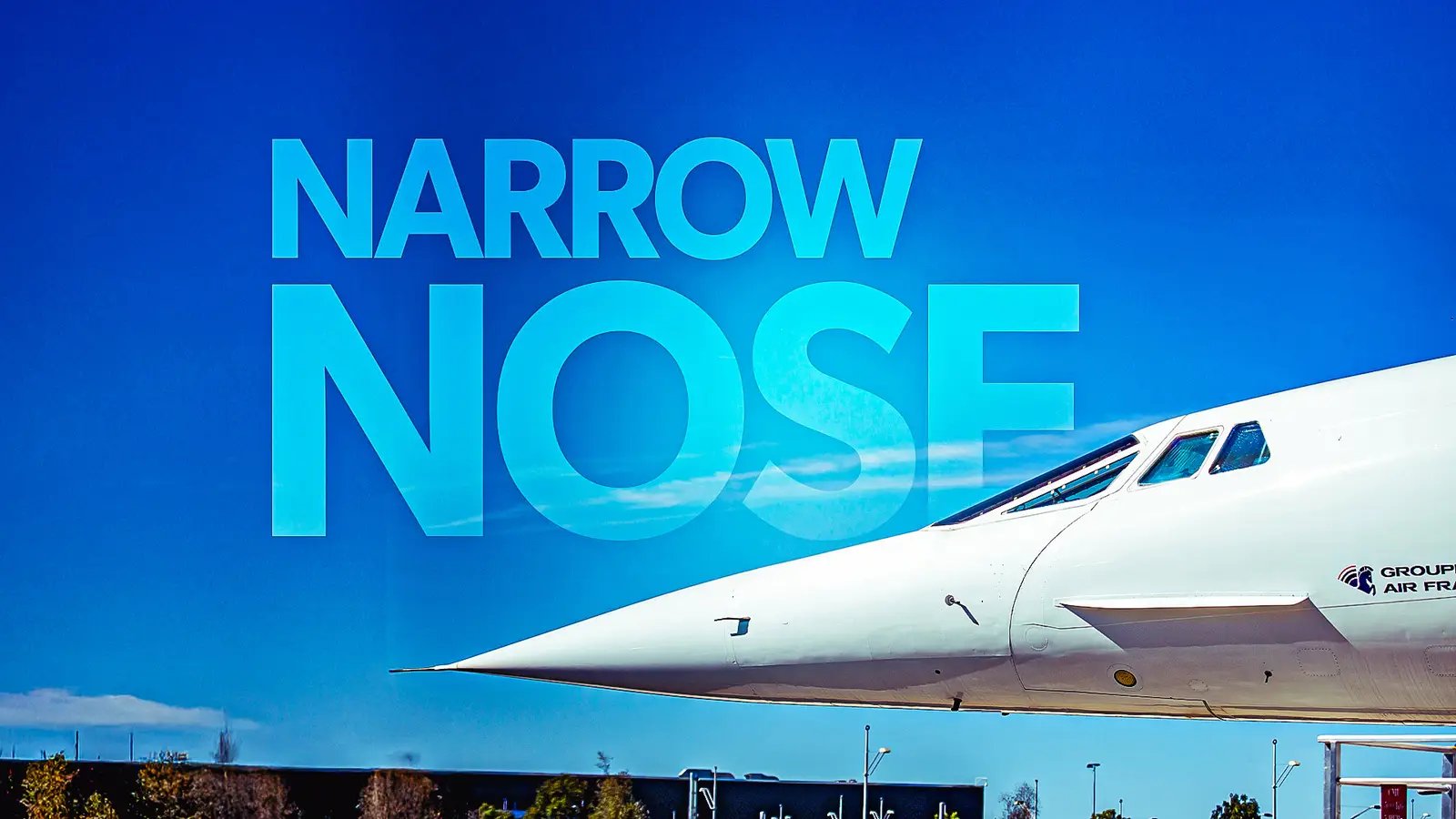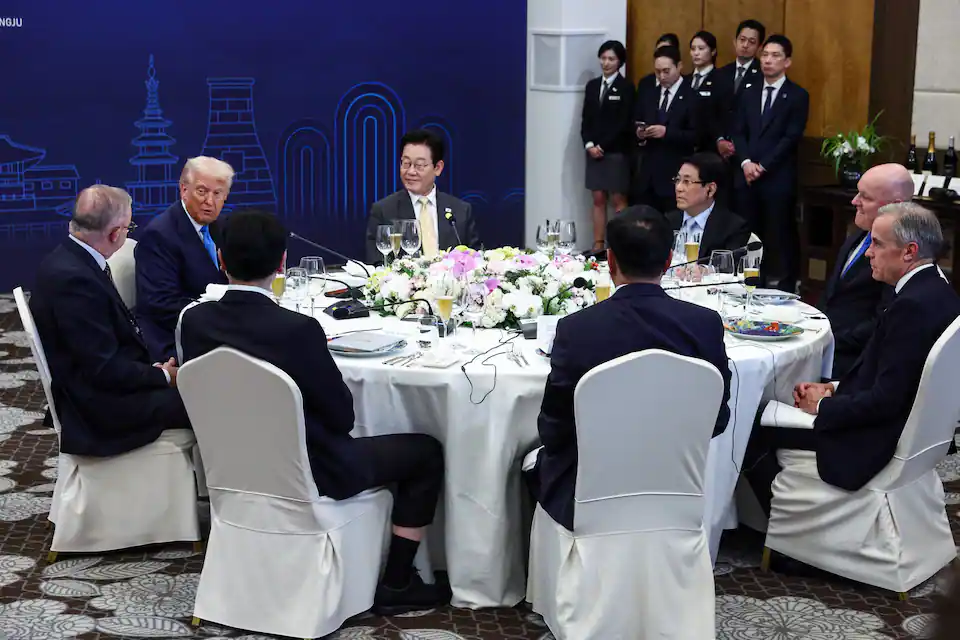Copyright Simple Flying

One of the defining features of Concorde is its long and pointed nose, which also droops. This article explores why Anglo-French engineers designed the aircraft with that nose and how emerging supersonic jets are improving and even exaggerating it. While Concorde remains a marvel of engineering, it is still a product of its era. In the end, Concorde was not able to overcome more efficient competition from subsonic aircraft. Only 14 examples ever entered service out of an initial market forecast demand of 350 aircraft. Concorde was the result of a joint program between France's Sud Aviation and the United Kingdom's British Aircraft Corporation (BAC). The reason why there was no other successful commercial supersonic jet to enter service is that the Soviet answer, the Tu-144, was impractical and a failure as a commercial passenger aircraft. Meanwhile, the US' Boeing and Lockheed both drew up designs for faster and larger supersonic jets. However, they (rightly) scrapped these projects in favor of slower, more efficient conventional subsonic jets. A Narrow Nose To Pierce The Air Like other supersonic aircraft, Concorde had to be designed with a streamlined airframe that would allow it to cut through air resistance like a bullet. Air resistance increases dramatically as aircraft approach and exceed the speed of sound, forming shock waves. Drag is high at transonic speeds, but then stabilizes and can decrease slightly at true supersonic speeds, although wave drag remains a major factor. The narrow and pointed nose of Concorde allowed it to reduce drag and improve its aerodynamic efficiency. The nose also came with a streamlined protective visor for the windscreen made of heat-resistant, tinted glass. Just as the friction of reentering the atmosphere means space capsules need heat shields, so too did Concorde need protection from high temperatures. That said, the issue is much greater for vehicles reentering the atmosphere as they have to contend with plasma forming. The nose and fuselage also contributed some lift to the aircraft at supersonic speeds, which helped the aircraft to offset its relatively small delta wing. Swept-back and delta-wing designs are better for high speed. But spread out wings are more stable at low speeds. Concorde had to contend with a high angle of attack due to its fixed delta design. But one military workaround was to make variable sweep wings, such as those found on the B-1 Lancer strategic bomber and F-14 Tomcat fighter jet, as well as the European Panavia Tornado fighter jet. Advancements, like flight by wire, have made variable sweep wings largely obsolete. Why Concorde Had A Drooping Nose Concorde also landed and took off with a very high angle of attack to allow its delta wing to produce enough lift at low speeds. But with these high angles of attack, the long and streamlined nose could completely obscure the runway. As a workaround, Concorde was designed to allow the nose to tilt. The nose was hydraulically lifted. This was an interesting engineering solution, although it also introduced more complexity, moving parts, and points of failure. A somewhat analogous issue is facing Boeing's 777X with its folding wingtips. The novel design could be contributing to its delayed type certification. Concorde's drooping nose was designed so that it could be configured during different stages of flight, allowing for maximum aerodynamic efficiency while cruising, and so that the pilots could see the runway while landing, as well as take off and taxi. One of the big challenges engineers have to contend with is how to make aircraft able to fly at both low and high speeds. The optimal shape for low-speed flight is dramatically different from that of high-speed flight. While the Soviet Tupolev Tu-144 also had a droop nose, it also had small retractable canards that were designed to help the aircraft when flying at slow speeds. Modern designs are doing away with the droop nose. These aircraft can use advanced camera systems to enable pilots to see the runway and have the awareness they need. Reducing Fuel Consumption One of the leading motivations to reduce drag is to improve fuel consumption. Overcoming drag requires more thrust, and to generate that energy, the engines need to burn through more fuel. Fuel is expensive. Supersonic jets' fuel inefficiency is one of the leading factors in why they have never been truly successful. Between the 1920s and 1960s, passenger aircraft got progressively faster, and there were those who believed that this would logically continue into supersonic aircraft. However, it was those who bet on transonic aviation that won the day. Ever since, one of the key driving factors in commercial aviation has been fuel efficiency, not speed. Modern passenger jets like the 787 and A350 even have slower cruise speeds than the old Boeing 707. This is why Boom Supersonic has described reducing drag and therefore fuel consumption as "paramount." Other disadvantageous factors supersonic aircraft need to contend with are noise and environmental regulations. According to Boom Supersonic, one of the primary sources of inefficiency for Concorde was the point where the wings attach to the body. This point represents a large increase in the volume of air being redirected relative to the aircraft's slim nose. The company notes its design benefits from decades of improvements and extensive research since Concorde was designed before advanced computer simulations were available. While Boom thinks its Overture can overcome the hurdles Concorde could not, it is worth noting the company is only targeting a small, high-paying niche mostly confined to trunk routes. It is not targeting the main body of the modern commercial aviation market. How Materials Have Changed From Concorde To Overture One of the key areas where Concorde shows it was a product of the 1960s is the materials it was constructed from. Around 95% of the aircraft's structure was made of Hiduminium RR. 58, which is a heat-resistant aluminum alloy. Specific areas of the aircraft's structure also had titanium and stainless steel to enable the aircraft to handle the stresses of supersonic flight. The nose cone also had resin-bonded glass fiber. This was used where skin temperatures were the highest during supersonic flight. By contrast, Boom Supersonic's upcoming Overture is to be primarily constructed out of carbon-fiber composites. These are lighter, more thermally stable, and stronger than traditional aluminum. Like Concorde, Overture will also have stainless steel and titanium in specific areas of the structure where extra strength is required. Overture's wings and fuselage will primarily be built out of carbon composites. In addition to the previously mentioned benefits, these materials give engineers more flexibility in molding the shape of the aircraft, including its nose. An Even Better Nose On Boom Overture As stated, Concorde was designed decades ago, and Boom Supersonic now has the benefits of studying Concorde, various experimental aircraft, and benefiting from many advances in technology. Boom Overture's nose reflects this. It is being designed to significantly reduce the drag created in supersonic flight. The new aircraft benefits from advanced manufacturing techniques, including carbon fiber composites that allow for the tapering down of the size of the fuselage. This reduces the size of the wave drag and is a concept known as "area ruling." It's worth noting that Overture will look remarkably different from Concorde. This is due to a range of factors, including improvements in design and being designed for a different mission. Overture will be slower (Mach 1.7 vs Mach 2.02) and will be smaller. Overture will have a delta-wing design, much like Concorde. Put simply, this is the design that works at supersonic speeds, although Overture will benefit from an improved tapering fuselage. As Boom points out, its engineers have more trade space — more opportunities to evaluate, test, and improve aerodynamics, including the nose design. Supersonic Noses Poised To Get Sleeker Overture is not the only game in town. Perhaps the most notable other supersonic jet in development is Spike Aerospace S-512 Diplomat. Beyond that, there are other supersonic jets in development from manufacturers around the world. Most telling is China's COMAC. When Concorde was developed, the Soviets felt they had to publicly compete with the West and so hurriedly designed and flew the impractical and ultimately unsuccessful Tupolev Tu-144 'Concordski.' With Russia now struggling to restart production of Soviet-era airplanes at all amid Western sanctions , it's the United States, Europe, and China that compete. Racing to catch up, China's COMAC is in the preliminary design phase of the C949 long-range supersonic airliner. Renders released by Hong Kong-based English-language South China Morning Post show the aircraft with an exceptionally long and pointed nose. COMAC has already developed the regional C909 and narrowbody C919 and is working on developing the widebody C929 and C939. Put another way, Concorde's nose was long and pointed because that's the shape needed for aerodynamic performance at supersonic speeds. Looking at the next generation of supersonic jets in development, it appears these noses are set to continue and get sleeker and perhaps even longer. Future supersonic jets will not have Concorde's drooping nose.



